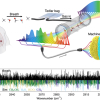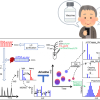Research has been published in Nature Communications on the utility of Biognosys’ Limited Proteolysis (LiP) technology and workflow for drug target identification. The publication is co-authored by collaborators from ETH Zurich, Biognosys, Bayer and BASF.
In the publication, the authors present a novel chemoproteomic workflow combining LiP and machine learning-based data analysis. This proteomics approach enables the identification of small molecule drug targets in complex proteomes and the analysis of their binding properties across species and drug target classes.
Oliver Rinner, Chief Executive Officer of Biognosys, comments: “Understanding a compound’s mechanism of action remains a major challenge in drug development. This publication is a testimony to our commitment to support our pharma and biotech partners with unique applications for more efficient drug discovery.”
Lukas Reiter, Chief Technology Officer, states: “Biognosys’ quantitative proteomics technology based on data independent acquisition (DIA) is a perfect fit for the LiP technology. This combined workflow enabled us to develop a target deconvolution approach for human cell lines.”
Professor Dr Paola Picotti, Associate Professor in Molecular Systems Biology and head of the Picotti group at ETH Zurich, and Scientific Advisor for Biognosys, says: “With the LiP approach, we can now also identify compound-binding in very complex mammalian cell systems with high confidence. In addition, we get information on binding affinity, which helps us to prioritise targets for follow-up studies.”
Thomas Knobloch, Laboratory Manager at Bayer CropScience, adds: “The LiP technology is a very valuable tool to identify target and off-target of novel compounds whatever the organism and to support the process of target deconvolution in early phase research.”









